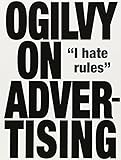read this: http://www.amazon.co.uk/Ogilvy-Advertising-David/dp/18537561...
then find what you are trying to sell, and sell it in plain terms. You are offering webdesign to businesses? they are coming to you because they don't understand web technologies. If your unable to communicate the essence of what you provide to the normal man, you are sunk at the landing page.
http://www.amazon.com/Ogilvy-Advertising-David/dp/039472903X...
For example:
If the images you’re using are not clearly tied to your value proposition, or to the central theme of your page, then they will only confuse your readers. At best, they’ll be pointless distractions. At worst, they’ll give the wrong impression and lead readers to feel tricked or disappointed.
In my experience, the blog posts I've written gain much more traction when they have images, even pointless stock images (I have experimented with this). So while I agree, that ideally, images should provide actual value to the story, I've found that a couple pointless stock images are better than no images. This is why I would have really liked to see actual evidence to back up their claims.
EDIT: Also, while we're on the topic, I also hate including all those social sharing widgets, but viewership takes a dramatic hit when they're not there.
[1] http://www.amazon.com/Ogilvy-Advertising-David/dp/039472903X
http://www.amazon.com/Ogilvy-Advertising-David/dp/039472903X...
David Ogilvy came up with a lot of the ideas, terminology and concepts of modern ad compaigns. He's also the one who said "The consumer is not a moron, she is your wife." - a truth that technical people are often slower to pick up than the rest of the population.
And this gem: "Always hold your sales meetings in rooms too small for the audience, even if it means holding them in the WC. 'Standing room only' creates an atmosphere of success, as in theatres and restaurants, while a half-empty auditorium smells of failure."
Ogilvy also coined a hundred slogans you know - 'only Dove is one quarter moisturizing cream'. His surname's already in your spell checker.
If you're interested in examples of inspiring communication created by advertising experts, check our Paul Arden's works, such as 'It's not how good you are , it's how good you want to be'. http://en.wikipedia.org/wiki/David_Ogilvy


That said, if you want to go analytical on typography, you should focus on how it is used in advertising. The original work in the field, Ogilvy on Advertising[0], is still important and fun to read. Given when it was written most of the ads it discusses are quite retro (from what I can tell every industry plot point in the first season of Mad Men came directly out of this book), but Ogilvy was a giant in the field who transformed advertising from "people who write good" to a data driven research activity, starting with typography and layout.
[0]https://www.amazon.com/Ogilvy-Advertising-David/dp/039472903...